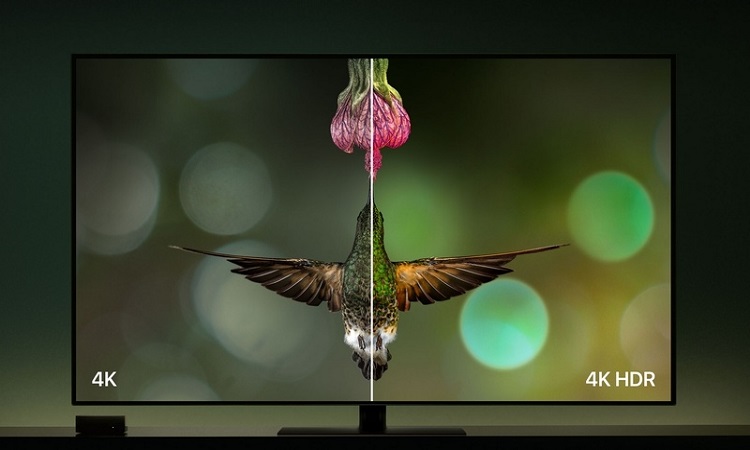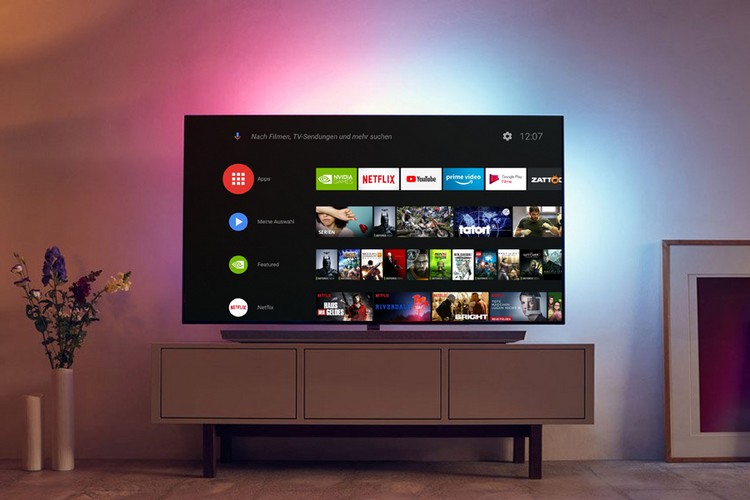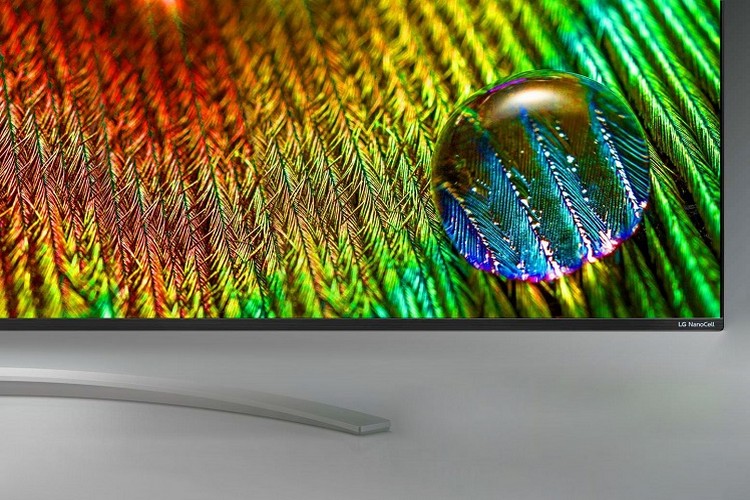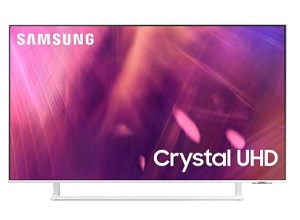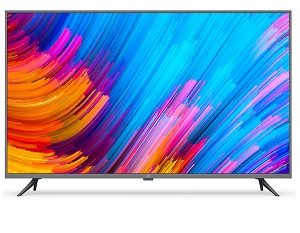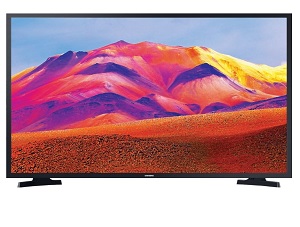How to choose a TV for home: main features and tips for choosing a quality model
 TV has long been an integral part of our lives. However, it's easy to get lost in the rich assortment of manufacturers and models, risking spending money on a low-quality device that is unable to produce a good image.
TV has long been an integral part of our lives. However, it's easy to get lost in the rich assortment of manufacturers and models, risking spending money on a low-quality device that is unable to produce a good image.
We have compiled a small instruction, where we tried to take into account all the main parameters that must be taken into account when buying a functional and high-quality device. And they made a small rating of the best for 2024-2025 in the nomination "Value for money for 2024-2025".
Content
How to choose a TV by function
Smart TV
It is provided by connecting the device to the Internet, via a cable or a Wi-Fi module.
All work is supported by its own operating system, providing access to all available applications and services.
This function turns the TV into a functional multimedia device. Now the user does not depend on the television program and can independently choose the content to watch.
HDR
An important parameter for TVs with low resolution. By adjusting the contrast, it turns out to improve the quality of the picture, the image becomes more realistic, and all the imperfections are leveled out.
All settings are made automatically during the broadcast.The so-called lagging areas are highlighted and the result is that the whole image becomes completely natural and deep.
TimeShift
A handy feature that will be appreciated by those users who often watch TV shows or follow the broadcast schedule.
At the right time, the broadcast can be paused, and then resume viewing at a convenient time for you.
If there is a background recording, playback and rewinding of the broadcast become available an unlimited number of times.
Voice control
To implement this function, a special remote control with a microphone is required. Automated commands are often used: users pronounce the desired word or phrase so that the system opens the application, stops or plays the air.
The principle of operation is simple: a button with a microphone is pressed, the required command is pronounced and confirmed by pressing the OK key. All other actions the system performs independently, in automatic mode.
Required ports
The most popular ports are:
- HDMI required to connect set-top boxes, game consoles, keyboards and other external devices. It is desirable that there be at least two of them - versions 2.0 and 2.1.
- USB. It is desirable - at least 2 ports of 3.0 format.
Which operating system to choose a TV
There is currently no single standard for Smart TV. Leaders in the production of such equipment offer their own solutions, each of which has a number of both advantages and disadvantages.
What is to be chosen?
Tizen
Samsung's own development, which is used in TVs from this manufacturer, as well as in some other devices, such as smart watches.
The control principle here is simple and ascetic, the user switches to Smart TV and gets into the menu consisting of a tile with applications.
Older models support multitasking, allowing you to open multiple windows on the screen. It should be noted right away that browsers within this system do not shine with speed, and it is not very convenient to manage the search using the remote control. But you can connect all Samsung smartphones, and for other gadgets you will have to download a special application.
webOS
By its principle, it is in many ways similar to Tizen (or vice versa) and is found in LG TVs. The set of services is about the same, with rare exceptions.
There is voice control, and the latest models are equipped with remote controls with a gyroscope, which greatly simplifies the search process.
Wi-Fi Direct is used to connect mobile devices. All popular Russian and international streaming services are available in the app store.
The range of applications is similar to the main competitor, but inferior in variety to the next option in our article.
Android TV
Unlike previous systems, here the developers made it so that the called Smart TV closes the currently playing content with its menu, expanding a separate page to full screen.
The choice of applications is large, here you can find many major foreign and domestic platforms, as well as applications for personal libraries and lists.
Yes, the interface is cumbersome, but for an experienced user there are no problems.It is convenient that developers of programs for the Android OS do not have to rewrite them again, adaptation for the television screen is enough.
There are many settings that will adjust the platform to the user's request. Android TV seamlessly interacts with smartphones on a similar operating system. And "apple" gadgets are connected using the manufacturer's proprietary application or via AirPlay.
So what to choose?
Experts do not give unambiguous recommendations, advising to choose based on personal preferences.
With which matrix to choose a TV
A user who is trying to pick up a new TV according to the type of matrix used by the manufacturer needs to be aware of their main pros and cons.
OLED
In this case, each pixel of the display is made as a separate light source. Due to the large pixel size, a high image resolution is provided, the pixel density becomes higher, and due to this, the image quality also increases.
The main advantages of such a matrix include:
- rich black tint;
- correct display of colors;
- high sharpness;
- energy saving;
- flat screens.
Of the shortcomings, it should be noted that the service life of such models is short due to pixel burnout. Also, OLED displays have a high cost and lower picture brightness compared to competitors.
QLED
QLED TVs have a quantum dot layer that allows them to display a wider color gamut.
However, this technology is mainly used only on screens with a large diagonal, which requires a significant increase in the budget for the purchase.
LED
LED (light emitting diode) technology appeared on the market earlier than QLED and OLED. These TVs use LED backlighting to illuminate the LCD panel.
Many LED TVs have a VA panel that guarantees high contrast but a small viewing angle. They can also be very bright, sometimes even too much. However, this shortcoming can be corrected with the help of settings.
LCD
These models are based on IPS technology, which is most common on smartphone and laptop screens.
The main feature is a rich color gamut with a naturalistic transmission of even minor shades, as well as wide viewing angles.
Do not forget about stable energy consumption, which indicates the absence of pixel burn-in. This has a positive effect on both the service life and the cost, making such TVs more affordable.
Crystal UHD
Crystal UHD are TVs with ordinary screen matrices, manufactured using standard technology without the use of quantum dot materials.
The term is used by Samsung, or rather, it is the marketing name of models that previously, until 2020, had the Premium TV prefix in their name.
This technology is used in budget models, has an eight-bit color depth, and the transfer of shades is performed by quickly turning on and off the light.
Nanocell
This is a proprietary system owned by LG and currently only used in their products. In fact, this is a transitional version from IPS, the difference lies in the way the backlight is used.
If IPS has it located at the edges of the screen, then Nanocell has it installed right under the LEDs.
Of the advantages note:
- low cost;
- a large selection of diagonals;
- high maximum brightness;
- color rendering quality, lack of dull shades;
- deep blacks and wide viewing angles;
- no risk of pixel burn-in;
- support for displaying HDR content and its modifications;
- works with artificial intelligence, which allows you to achieve high detail;
- a large selection of automatic image modes.
Main cons:
- contrast is significantly inferior to OLED, QLED;
- the use of obsolete matrices, replacement is required, which may affect further price increases.
What size TV to choose
When choosing a screen size, you should consider the distance between it and the place where you will watch a movie or show. Measure the distance and divide by 7.5 to figure out which diagonal is right for you.
Examples:
- The distance from the kitchen table to the TV is 150 centimeters. Divide by 7.5 and we understand that the minimum recommended screen size will be 20 inches.
- In the living room, the distance from the TV to the sofa is 350 centimeters. When divided by 7.5, it becomes clear that 46-inch models (plus or minus five inches) will suit you.
- With a distance of 300 centimeters from the bed to the device, you need to choose a TV with a screen diagonal of 40 inches (a little more is possible).
What is the best screen coverage?
Glossy
Glossy displays will please the user with greater brightness, the image is more saturated, with good contrast transmission. Under equal conditions, if we compare the glossy coating with the rest, the color is better displayed here, the black color is deep, there are no extra highlights. This makes the picture more beautiful and natural.
There are also wider viewing angles, which is an important parameter if you do not have a clearly organized space for watching TV or a large number of people regularly gather in front of the screen.
However, it was not possible to do without shortcomings here. Experts call the main disadvantage of a glossy coating a high degree of reflection. The screen strongly reflects any light sources and thus turns almost into a mirror.
Matte
A feature of matte screens is that they have an anti-reflective coating that can dampen glare. This is the best option for a room with bright artificial or natural light.
Yes, the colors here look more dull, faded. Because of this, the image may be of poorer quality compared to the same picture on gloss.
Anti-glare
This type of coating is derived from matte and is most often used for computer screens, but can also be found on televisions.
In terms of image quality, everything remains the same as in the previous version. Due to the polarizer, light reflection is minimized.But the light from the LCD screen has to pass through an extra layer of coating, and as a result, the matte TV screen scatters most of the light, which negatively affects the brightness of the hue.
So what to choose?
The choice between different types of coverage depends on the characteristics of your premises.
If the TV will be in a room with large windows or very bright lamps, then a matte or anti-reflective option would be the best option.
And for those rooms where the TV will turn on when the lights are off or soft diffused lighting, you can safely install a model with a glossy screen.
Which brand of TV to choose
In order not to be disappointed in the purchase and get a functional and modern device that can last for years, it is important to choose a TV from a range of popular and trusted manufacturers.
In 2024-2025, these include companies:
- Samsung;
- LG;
- Xiaomi;
- Sony;
- Phillips.
TOP 5 best TVs by price / quality for 2024-2025
Quantum Dot Samsung UE43AU9010U 43?
Large LCD TV with an original design that will fit into the interior of any modern apartment. Mounted on a stand (included) or hung on the wall using a special bracket.
The screen diagonal is estimated at 43 inches, the model supports 4K resolution, while the response time reaches 8 ms, and the refresh rate and dynamic scene index are 60 Hz and 2800, respectively.
The TV will please with good sound quality from two speakers with a total power of 20 W and a wide (178 degrees) viewing angle.
In the assembly of the device, the manufacturer uses an IPS panel, which has a wide color gamut.Direct LED backlighting is responsible for high-quality transmission of shades, without distortion of white or black.
There is a smart TV platform, cable and wireless network connection, a full set of interfaces for connecting acoustics, removable storage media and other equipment.
Main characteristics:
- Screen size and resolution - 43 inches, 3840x2160.
- Types of backlight / matrix - Direct LED / IPS.
- The viewing angle is 178 degrees.
- Response time / frequency - 8 ms / 60 Hz.
- Sound power / number of speakers - 20 W / 2.
- Smart TV platform - Tizen.
- Voice control - yes.
- The weight of the device is 9 kg with the stand.
Pros:
- high-quality picture, clear, juicy, without distortion;
- surround sound with a decent volume level;
- convenient control, including voice;
- rich set of interfaces;
- understandable Smart TV platform.
Minuses:
- black mark around the screen, despite the white case.
Sony KDL-40RE353 40?
The LCD TV model, which was introduced by the manufacturer back in 2017, but is still very popular among buyers. Sold with a stand, has a screen surrounded by thin frames, the diagonal reaches 40 inches.
Supports Full HD resolution, has wide viewing angles, allowing you to enjoy high-quality images from anywhere in the room. Thanks to the IPS matrix, a special Live Color mode is available to the user, which displays natural colors and shades as realistically as possible.
This is a classic model without Smart TV, there is support for analog and digital broadcasting. You can also enjoy content using a USB flash drive or hard drive connector.
The sound is represented by two speakers, but its total power is less than half that of the previous model.There is a headphone output, you can connect a set-top box, computer or audio system.
Main characteristics:
- The screen size and resolution is 40 inches/1920×1080.
- Types of backlight / matrix - Direct LED / IPS.
- The viewing angle is 178 degrees.
- Response time / frequency - 8 ms / 60 Hz.
- Sound power / number of speakers - 10 W / 2.
- The smart TV platform is missing.
- Voice control is missing.
- Device weight - with stand 6.9 kg.
Pros:
- value for money;
- thin frames;
- good signal transmission;
- high-quality image with naturalistic color reproduction.
Minuses:
- USB is only one;
- Bluetooth is missing.
Xiaomi Mi TV 4S 50 T2 49.5?
A functional TV in a steel-tone design with ultra-thin bezels and a large screen of almost 50 inches.
Supports 4K resolution (3840 × 2160 pixels), equipped with Direct LED backlight and IPS matrix. The response time is estimated at 9 ms, the refresh rate is 60 Hz.
Mi TV is equipped with three HDMI ports, two USB ports and an Ethernet port for connecting wired internet. All connectors are installed on the side, which facilitates the connection process.
In the kit, the user will find a standard remote control with 11 buttons and a voice control function. The sound is surround, output through two speakers with a total power of 20 watts.
The model is equipped with the Smart TV platform, which is controlled by the Android operating system, with a large number of applications and online cinemas. Wireless communication is presented in the form of Wi-Fi and Bluetooth modules, the connection to devices is stable, without constant signal interruptions.
Main characteristics:
- Screen size and resolution - 49.5 inches / 3840 × 2160.
- Types of backlight / matrix - Direct LED / IPS.
- The viewing angle is 178 degrees.
- Response time / frequency - 9 ms / 60 Hz.
- Sound power / number of speakers - 20 W / 2.
- The smart TV platform is Android TV.
- Voice control - yes.
- Device weight - 10.66 kg with stand.
Pros:
- modern design and two ways of placement;
- high-quality sound and picture;
- ports on the side, a good set of interfaces;
- there is voice command control;
- friendly system.
Minuses:
- The remote control is minimalistic, you need to get used to the control features.
Samsung UE32T5300AU 32? (2020)
A classic model in a black body design, with a screen diagonal of 32 inches, an ambient light sensor and support for Full HD resolution.
Can be placed on the wall or mounted on a two-piece stand with supporting elements along the edges. It has wide viewing angles, a good index of dynamic scenes and surround sound from two speakers with a total power of 10 watts.
This model applies to devices with the ability to connect to the Network, via cable or wireless connection. This allows you to access Smart TV.
The Tizen system gives a lot of advantages to the user, allowing the device to work faster, without spending a lot of time processing processes and providing the opportunity to enjoy a variety of content from a large number of online platforms (cinemas, video hosting).
The USB port will allow you to connect mobile equipment and drives, and HDMI - video equipment, there is a headphone jack and an audio system.
Main characteristics:
- The screen size and resolution is 32 inches/1920×1080.
- Types of backlight / matrix - Direct LED / IPS.
- The viewing angle is 178 degrees.
- Response time / frequency - 9 ms / 50 Hz.
- Sound power / number of speakers - 10 W / 2.
- Smart TV platform - Tizen.
- Voice control is missing.
- The weight of the device is 4.1 kg with the stand.
Pros:
- classic model;
- high-quality picture, clear, bright and juicy;
- sensitive antenna;
- stable network connection.
Minuses:
- no control buttons on the case;
- spontaneously connect to all active devices.
LG 32LM6350 32?
And in conclusion of the ranking of the best TVs of 2024-2025 in the nomination "Value for money" it is worth mentioning this model from LG, equipped with a 32-inch screen.
Supports high resolution Full HD and has wide viewing angles, which protects against distortion of the picture if you watch TV without sitting directly in front of it.
The matrix has a wide color gamut, colors are transmitted as realistically as possible, despite the low screen frequency, in dynamic scenes there is no frame separation.
The package includes a universal multi-brand remote control and a convenient stand for installation. There is a light sensor, child protection, a wide range of interfaces for connecting various equipment.
The device connects to the network via a cable or a Wi-Fi module. There is a Smart TV system represented by the webOS platform. There is also voice control, as well as the ability to integrate with the LG Smart ThinQ smart home ecosystem.
Main characteristics:
- The screen size and resolution is 32 inches/1920×1080.
- Types of backlight / matrix - Direct LED / IPS.
- The viewing angle is 178 degrees.
- Response time / frequency - 8 ms / 50 Hz.
- Sound power / number of speakers - 10 W / 2.
- Smart TV platform - webOS.
- Voice control - yes.
- Device weight - 4.7 kg with stand.
Pros:
- sound and image quality;
- connection stability;
- fast and convenient remote control;
- can be used for hotel;
- color rendering;
- voice search.
Minuses:
- the matrix does not have enough brightness;
- low operating speed.
A short checklist for choosing a TV
So, in order to choose a high-quality model of a new TV, you need:
- determine the installation location;
- set a budget;
- calculate the required diagonal size;
- examine the lighting in the room to select a screen cover;
- select the main set of required functions;
- ensure the quality of color reproduction and optimal brightness and contrast.
Useful video
A lot of tips on how to choose a TV are given in the video:



